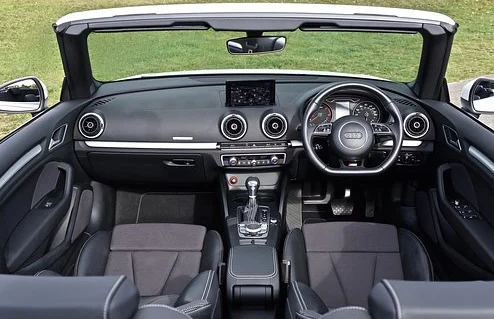Why Automobiles Need Transmissions
You don’t should be a mechanical virtuoso to comprehend why a vehicle needs a motor. It gives the intention power to move the vehicle. What’s more, it is likewise lovely obvious that it is basic to get the thought process power from the motor to the wheels to drive the vehicle. The framework that does that is known as the transmission. However, there’s something else entirely to it than a basic mechanical hookup between the motor and drive wheels.
An inner burning motor makes force and force in an extremely limited working reach. This requires that the vehicle has gears that empower the motor to work in its reach as the vehicle speeds up, arrives at a steady cruising speed, and decelerates. Without that, a vehicle’s speed expected would be amazingly restricted.
In an inward ignition motor vehicle with a manual transmission, the driver switches the gears. A sensibly clear mechanical course of action empowers the driver to utilize a change switch to pick the individual gear from among a choice of pinion wheels suitable for the quick driving circumstance. Manual changing between gears requires the incessant detachment of the motor from and reconnection to the driving component—the propellor shaft and half-screws that go to the drive wheels—during any drive. The mechanical grip is the method for separation and reconnection. It is foot-worked utilizing the vehicle’s grip pedal. Switching gears requires aptitude and footwork. However doing it well can be fun, it additionally requires exertion.
From Manual to Automatic Transmissions
It didn’t take long for auto pioneers to start dabbling with computerizing the stuff evolving measure. Doing as such would work on driving and open the opportunity and accommodation of individual transportation to those coming up short on the expertise or solidarity to switch gears physically utilizing the normal interaction. In any case, it wasn’t until the 1930s that General Motors engineers fostered a pragmatic arrangement of making programmed gear changes. That framework was what we presently call the programmed transmission.
However the plan has been refined throughout the long term—most as of late by the expansion of electronic controls—the first designing idea of the 1930s stays the premise of the programmed transmissions that switch gears in the present vehicles, trucks, vans, and SUVs.
Key Components of Automatic Transmissions
A programmed transmission does something easy to depict in words. It switches gears without course from the driver, beside picking Drive, Reverse, Neutral, and Park. In any case, getting that to happen includes a large number that should work in congruity in an assortment of conditions again and again and over once more. Here are the key components:
Force Converter
A force converter was a principal advancement prompting the improvement of a commonsense programmed transmission.
A force converter basically plays out the capacity that a mechanical grip does in a manual transmission. It empowers the motor association with and disengagement from the driveline depending on the situation to work with the switching of gears.
The utilization of liquid elements can move force from the motor when required by the vehicle to push ahead, however it will basically absorb that force when pushing ahead isn’t wanted.
This capacity empowers you to leave your vehicle in Drive while you have your foot solidly on the brake when halted at a stoplight. At the point when you discharge the brake, the force converter empowers the vehicle to crawl forward.
Planetary Gears
On the off chance that your vehicle had a force converter and a solitary forward gear, your forward speed would be seriously restricted by the motor’s working reach and force creation capacity. That is the reason gear-changing is vital.
A programmed transmission utilizes an alternate sort of gearset than a manual transmission vehicle. It utilizes a bunch of planetary cog wheels to make a few stuff proportions as the programmed transmission’s hydrodynamics controls them.
Brake Bands and Clutches
Brake groups and grips impel the switching of gears in the planetary gearset. Brake groups fix to hold a specific stuff fixed or slacken to empower that stuff to turn. Furthermore, it is the blend of fixed and turning gears in the gearset that delivers every individual stuff proportion.
The grip in the transmission have a comparable capacity, assisting with deciding the specific stuff proportion the planetary gearset is making at that point. To move between various stuff ratios includes the fixing and releasing of grasps and groups. This is coordinated by hydrodynamics, hardware, or a mix of both.
How an Automatic Transmissions Works
At the point when you drive a vehicle with a programmed transmission, placing the vehicle in Drive actuates the framework. By pushing on the gas pedal, the motor’s driving rod starts pivoting all the more quickly and this, thus, prompts more pressing factor inside the force converter. As the vehicle pushes ahead, the transmission’s power through pressure and hardware sense its speed corresponding to motor speed, and the transmission switches gears consequently accordingly.
In the exemplary programmed transmission, water power inside the transmission sense those speed changes. Those water power then, at that point actuate other hydrodynamics to switch gears in the planetary gearset. Today, hardware supplement that detecting interaction, and the programmed transmission works working together with the vehicle’s different frameworks.
Along these lines, the following time you drive your vehicle, you ought to know that great many computations go into the stuff that your transmission picked at that point. Your vehicle is doing a ton of work each second to make driving a lot simpler for you.

